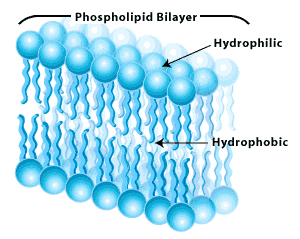
Some people live to eat but we ALL eat to live.
We may sit down to a simple meal or a lavish feast. We may find ourselves...in an office cubicle...eating a packed lunch all alone. Or dolling ourselves up for a fancy dinner gathering (as in the photo of myself in this post!). In Singapore, where everyone is leading such fast paced, "instant" lives, sitting down together, as a family, for a home-cooked meal is becoming a rarity! So sad but true.
In which ever way we may get our "daily bread", we all eat. We eat everyday. We do it so routinely that has anyone of you ever paused to think "Why do I actually have to eat?".
Now comes the science bit...
Food
contain different nutrients that help our bodies in different ways.
Basically, there are 2 ways in which food is utilised by our bodies.
1) To provide energy to fuel our bodily processes.
2) To provide building blocks for growth, maintenance and repair of our bodily structures.
But before even getting to the above 2 points, food must first be digested. During digestion, food is broken down into its constituent parts. Then, by "absorption", these simpler digested food units are able to cross the intestinal wall into the blood stream, where they get distributed all around the body.
In order for the body to utilise these simple food units, various biochemical reactions occur to further breakdown these simple food units into essential molecules which the body can use. Collectively, these biochemical reactions that serve to
breakdown food units are called "
catabolism".
As I mentioned earlier, food contain different nutrients which help our bodies in different ways. Broadly speaking, these food nutrients can be divided into the 4 major macromolecules found in our bodies. These are lipids (which we covered yesterday), carbohydrates, proteins and to a lesser extent, nucleic acids. The latter 3 macromolecules, I will hope to touch on in the days to come (so keep checking back for new posts!).
Now, back to the 2 ways by which our body utilises the nutrients found in food.
1)To provide energy to fuel our bodily processes.Carbohydrates are our bodies' main source of energy. Carbohydrates, like rice and potato, undergo catabolism to yield glucose molecules. These are the essential starting molecules (in biochemistry we call "substrates") for the energy generating reactions of cellular respiration (again another topic for a future post in this blog).
Lipids can also be used to generate energy. However, they are a secondary source of energy to that of carbohydrates.
Of last resort, would be to utilise proteins for energy. As you will read below, proteins are used for building structures in our body (like muscle, skin, hair and nails). So, when the body has to rely on using protein for energy, it will be under the circumstance of malnutrition!
2) To provide building blocks for the growth, maintenance and repair of our bodily structures.As mentioned above, protein is the main source of nutrient from food for building our bodily structures. Protein is found in cheese, eggs, meat, poultry, fish and nuts.
As with carbohydrates, protein from our food must undergo catabolism. Protein molecules are catabolised into it's constituent "amino acid" molecules. These amino acids are like building blocks of the protein. So, basically, what the body does is to disassemble these amino acids from the protein from food, then reassemble these amino acids into other type of protein molecules required by the body. The biochemical reactions which are carried out to
build up such new molecules are collectively termed "
anabolism".
To sum up why we have to eat - we eat to sustain metabolism.All of you must have heard of the term
metabolism. Some people, like myself, thank our high metabolic rate for keeping our weight in check. Yet, others blame a low metabolic rate for their weight problems. What really is metabolism? It is how our body biochemically processes and uses energy and nutrients from food for daily functioning. From the above paragraphs, you should be able to make out that metabolism
consists of catabolism (the breakdown of food to yield essential molecules and energy),
as well as anabolism (the build up of new molecules for use in the body).
So, from asking a simple question of "why we have to eat?", I hope you have come to understand a fundamental biochemistry concept:
Concept #1Metabolism = Catabolism + Anabolism
 Today was my niece's wedding day! They had a lovely Catholic church service followed by a delightful lunch reception. Weddings tend to leave a lingering sweet, warm feeling to all who witness the joyful union of 2 becoming 1.
Today was my niece's wedding day! They had a lovely Catholic church service followed by a delightful lunch reception. Weddings tend to leave a lingering sweet, warm feeling to all who witness the joyful union of 2 becoming 1. Nucleotides join to make a single strand of polynucleotide via phosphodiester bonds between alternating phosphate and sugar groups. We call this the "sugar-phosphate backbone" of a single strand of polynucleotide.
Nucleotides join to make a single strand of polynucleotide via phosphodiester bonds between alternating phosphate and sugar groups. We call this the "sugar-phosphate backbone" of a single strand of polynucleotide. 





 The festive year end is here and everyone is scurrying to get their Christmas shopping done. Have you tried driving into Orchard Road?! I haven't quite got round to doing my shopping yet but have put up our Christmas tree (as seen here in this post).
The festive year end is here and everyone is scurrying to get their Christmas shopping done. Have you tried driving into Orchard Road?! I haven't quite got round to doing my shopping yet but have put up our Christmas tree (as seen here in this post).